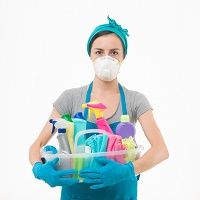- Best Practices New Normal
- Digital Dentistry
- Data Security
- Implants
- Catapult Education
- COVID-19
- Digital Imaging
- Laser Dentistry
- Restorative Dentistry
- Cosmetic Dentistry
- Periodontics
- Oral Care
- Evaluating Dental Materials
- Cement and Adhesives
- Equipment & Supplies
- Ergonomics
- Products
- Dentures
- Infection Control
- Orthodontics
- Technology
- Techniques
- Materials
- Emerging Research
- Pediatric Dentistry
- Endodontics
- Oral-Systemic Health
Promoting a Safety Culture Has Financial and Health Benefits
A recent study of 11 dental offices found that E. coli was found on 70 percent of patient chairs, and 25 percent of reception area counter tops. But a culture of safety can lay the foundation for an efficient dental practice, where both the dental professionals and patients feel comfortable.

A study in the Journal of Dental Hygiene reveals that of the 11 dental offices included, E. coli was present on 70 percent of patient chairs, and 25 percent of reception area counter tops.
Are you doing everything you can to ensure your practice is as safe as possible for both staff and patients? If not, it could prove costly for you and your practice.
According to the Centers for Disease Control and Prevention, the flu causes employees to miss approximately 17 million workdays each year at an estimated cost of $7 billion in sick days and lost productivity.
“That’s crazy,” says Sarah Bell-West, PhD, scientist for Clorox Healthcare. “And that’s why implementing a robust safety control system, as well as regularly enforcing hand hygiene and cleaning protocols, should really be top of mind for dental professionals.”
TEAM EFFORT
Notice that Bell-West stated “dental professionals.” That’s because all members of the practice play an important role in maintaining a health environment and facility. As such, everyone from hygienists to front office receptionists should be educated on the importance of regular cleaning and disinfection.
A good place to start, says Bell-West, is a review of infection control guidelines established by the CDC. Secondly, all staff should review the OSHA bloodborne pathogen standards to understand how they fit within the framework of a dental practice.
Educating patients is also important, but something Bell-West says tends to get overlooked.
“We primarily focus on the staff,” she explains. “A lot of states require that every year or two you do a robust infection control training to get continuing education credit. But there isn’t as much done on the patient side.”
A good place to start is at the front reception desk. Place hand sanitizer on the countertop and a sign asking patients to please sanitize their hands before entering the practice.
“It’s a great way to get patients and staff to remember that hand hygiene is so important,” Bell-West says.
STYMIE THE SPREAD
To better understand the spread of germs and infectious diseases, Bell-West refers to the epidemiological triangle, which consists of an external agent, such as flu or rhinovirus or even bacteria like staph or E. coli, a susceptible host, and an environment bringing the host and agent together.
What’s scary, Bell-West explains, is that many times the host doesn’t know they’re carrying a specific pathogen.
“If I walk into a dental office, sneeze into my hand, and then forget to wash my hands before shaking the hand of my dentist, I have then shared my germs with the dentist,” she says. “And what makes it super scary is that pathogens can survive outside the body for days, weeks, even months in some cases.”
That can be extremely costly to a dental practice. For example, Bell-West explains that if a hygienist is out sick for one day and there isn’t someone who can easily cover for them, that could result in having to reschedule eight to 10 patients, and lost revenue for the day.
“If somebody is out for a day because they’re ill, that can really affect a practice’s bottom line.”
PREVENTIVE MEASURES
Bell-West recommends dental practices implement a robust safety control system, and identifies three key steps in the process. The first is to keep ready-to-use disinfectants like Clorox Healthcare® Disinfecting Wipes readily available in every operatory as well as reception and waiting areas. Make sure to regularly clean and disinfect frequently touched surfaces, such as countertops and door handles, to prevent the spread of pathogens.
Next, it’s essential to clean and disinfect the operatory between patients. For that, Bell-West recommends using Clorox Healthcare Hydrogen Peroxide Cleaner Disinfectant Wipes.
“The really nice thing about them is they’re easy to use, and they quickly kill pathogens within 30 seconds, which is great if you’re trying to turn around a room quickly,” Bell-West says. “And, hydrogen peroxide is an amazing cleaner against things like blood, which can splatter on surfaces during dental procedures.”
Lastly, promote hand hygiene. Bell-West says that approximately 80 percent of infectious diseases spread via touch. Hand hygiene can be the first line of defense to prevent the spread of infection. And be certain to use hand sanitizers that not only kill germs, but soothe skin.
“We know healthcare professionals can wash their hands up to 100 times a day,” she says. “So it’s really important that you’re killing the germs on your skin, but you also need something like aloe or vitamin E to help repair the skin as well. At the end of the day, this is how dental teams can help promote a culture of safety, prevent the spread of pathogens, and help their practice run more efficiently.”
